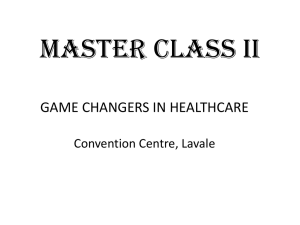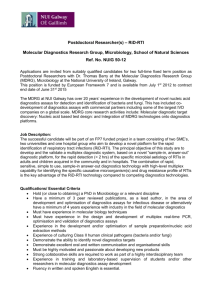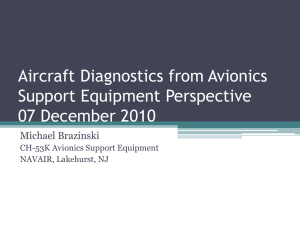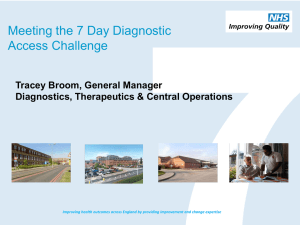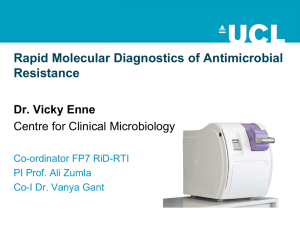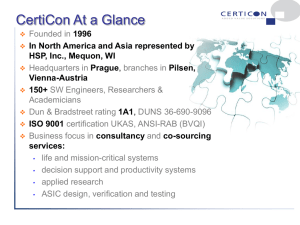1. Diseases of the ear. Shall be proficient in The anatomy and
advertisement
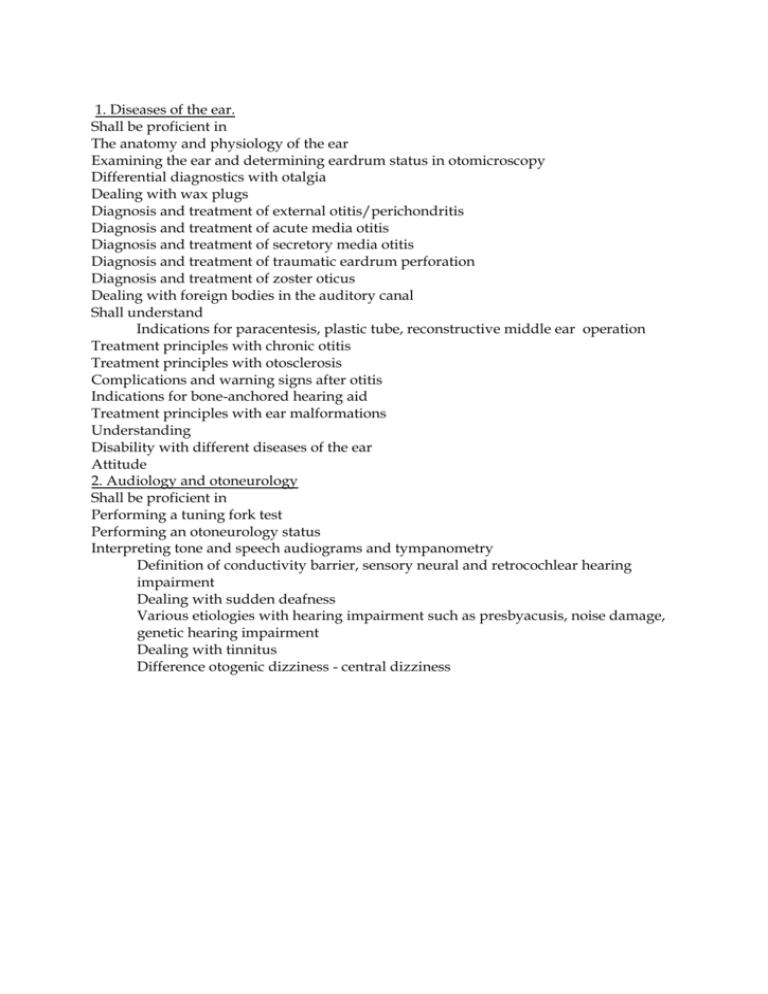
1. Diseases of the ear. Shall be proficient in The anatomy and physiology of the ear Examining the ear and determining eardrum status in otomicroscopy Differential diagnostics with otalgia Dealing with wax plugs Diagnosis and treatment of external otitis/perichondritis Diagnosis and treatment of acute media otitis Diagnosis and treatment of secretory media otitis Diagnosis and treatment of traumatic eardrum perforation Diagnosis and treatment of zoster oticus Dealing with foreign bodies in the auditory canal Shall understand Indications for paracentesis, plastic tube, reconstructive middle ear operation Treatment principles with chronic otitis Treatment principles with otosclerosis Complications and warning signs after otitis Indications for bone-anchored hearing aid Treatment principles with ear malformations Understanding Disability with different diseases of the ear Attitude 2. Audiology and otoneurology Shall be proficient in Performing a tuning fork test Performing an otoneurology status Interpreting tone and speech audiograms and tympanometry Definition of conductivity barrier, sensory neural and retrocochlear hearing impairment Dealing with sudden deafness Various etiologies with hearing impairment such as presbyacusis, noise damage, genetic hearing impairment Dealing with tinnitus Difference otogenic dizziness - central dizziness Diagnostics and treatment of benign positional dizziness, acute vestibular loss, Mb Meniere Dealing with whiplash injuries - neck dizziness Difference peripheral/central facial palsy Examining and treating peripheral facial palsy Shall understand Examination of hearing impairment - balance difficulties Genetic hearing impairment in children Looking after hearing handicap Noise prophylaxis Asymmetrical hearing impairment Diagnostics of acoustic neuroma Ototoxic drugs Hearing aids Cochlear implant Progressive hearing impairment Other personnel's competence in hearing care Understanding What it means to be deaf/hearing impaired as a child and adult What it means to have chronic dizziness/instability Attitude 3. Diseases of the nose and sinuses Shall be proficient in The anatomy and physiology of the nose and sinuses Examining and assessing nasal status with front rhinoscopy Differential diagnostics with nasal congestion, running nose, odour disturbances Assessing septum deviation Diagnostics and treatment of allergic, vasomotoric, atrophic and medication rhinitis Diagnostics and treatment of acute maxillary frontal sinusitis, ethmoiditis Diagnostics and treatment of nasal polyps Diagnostics and treatment of nasal furuncle Stopping front and rear nosebleeds Dealing with foreign bodies in the nose Shall understand Which radiological examination is most appropriate in relation to symptoms The commonest surgical procedures in the nose and sinuses, such as flushing, evulsio, septoplasty, FESS Treatment of recurrent sinusitis Complications after sinusitis Understanding Underlying pathophysiology with nasal diseases Effect of nasal congestion on quality of life Attitude 4. Diseases of the mouth and throat. Shall be proficient in The anatomy and physiology of the mouth and throat Examining and assessing mouth and throat status including the nasopharyngeal space and palpitation Diagnostics and treatment of tonsillitis, peritonsillitis, pharyngitis Diagnostics and treatment of adenoids and tonsil hyperplasia Diagnostics and treatment of snoring and sleep apnoea Diagnostics and treatment of candida, leucoplakia, mouth dryness Diagnostics and treatment of dental diseases and their consequences Dealing with foreign bodies in the mouth and throat Shall understand Treatment of abscesses in the mouth and throat The oral manifestations of systemic diseases Alternative treatment of sleep apnoea Effects of radiology on the oral cavity Understanding Pathogenic sequence of throat infections Effect of dryness of the mouth on quality of life Attitude 5. Diseases of the salivary gland Shall be proficient in The anatomy and physiology of the salivary gland Examining the salivary gland and its ducts Diagnostics and treatment with sialolithiasis Diagnostics and treatment of sialadenitis and purulent parotitis Diagnostics and treatment of benign tumours in the salivary gland Shall understand Sjögren's syndrome Understanding Attitude 6. Diseases of the larynx and trachea. Shall be proficient in The anatomy and physiology of the larynx and trachea Examining the larynx with indirect and fibre laryngoscopy Primary action with high breathing impediments Dealing with foreign bodies in the larynx, trachea and bronchus Diagnostics and treatment of epiglottitis, laryngitis and pseudo croup Differential diagnostics with hoarseness Diagnostics and treatment of chronic laryngitis, phonasthenia Heimlich's manoeuvre Shall understand Diagnostics and treatment of vocal cord palsy Tracheotomy, coniotomy, care of tracheal cannulae Understanding Assessing degree of breathing impediment and the need fro acute action Attitude 7. Voice disorders Shall be proficient in Shall understand Phoniatric examination methods, treatment and diagnostics Speech therapists' competence in ENT/speech therapy such as cochlea implant, dysphagia, LCG, laryngectomy patients, voice disturbances, stammer Which patients can be referred to a speech therapist Understanding Correlation between airway, swallowing, voice Communication aspects of damage to voice and speech organs Attitude 8. Diseases of the oesophagus Shall be proficient in The anatomy and physiology of the oesophagus Differential diagnostics with dysphagia Diagnostics and treatment of reflux disease and oesophagitis Diagnosing acid and alkaline damage Dealing with foreign bodies in the oesophagus Shall understand Diagnostics and treatment of strictures and diverticles Examination with manometry and 24 hour pH measurement Understanding Quality of life aspects of dysphagia Attitude 9. Facial trauma Shall be proficient in The anatomy and physiology of the face and base of the skull Diagnosing and assessing facial and skull base fractures Dealing with soft tissue damage to the face, mouth and throat Repositioning jaw-joint luxation Dealing with knocked-out teeth Shall understand Understanding Attitude 10. Tumour diseases Shall be proficient in The anatomy of the head and neck Manifestations of malignant tumours in the head and neck Examining nodes on the neck Diagnostics and treatment of medial/lateral neck cysts Diagnostics and treatment of thyroid diseases Diagnostics and treatment of benign tumours in ENT Relationship between alcohol, tobacco and tumours Shall understand Principles for examining and treating malignant tumours Teamwork around patients with tumours Prognosis factors for cancers Rehabilitation of cancer patients Understanding Quality of life aspects of tumour treatment in ENT Attitude

